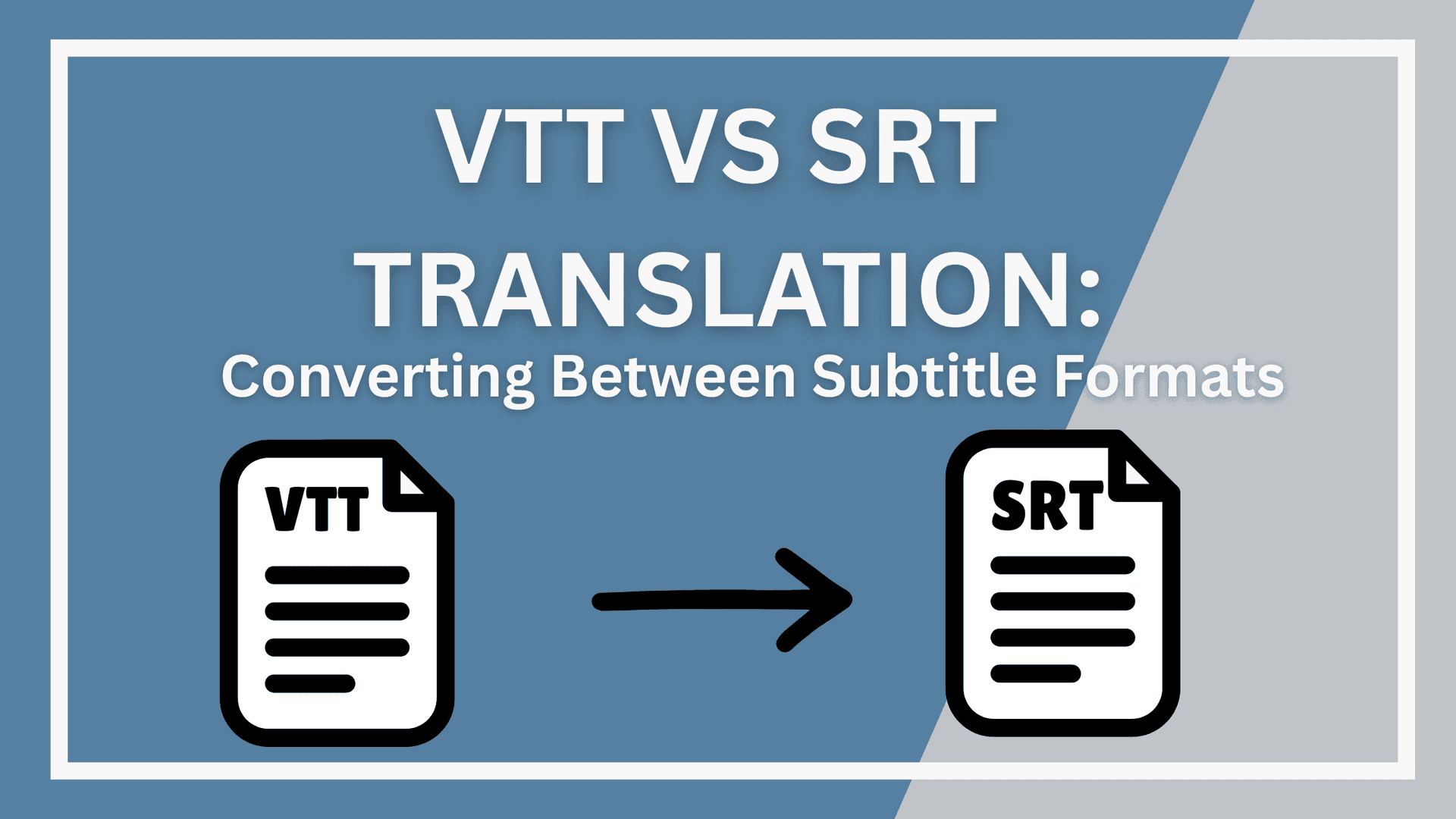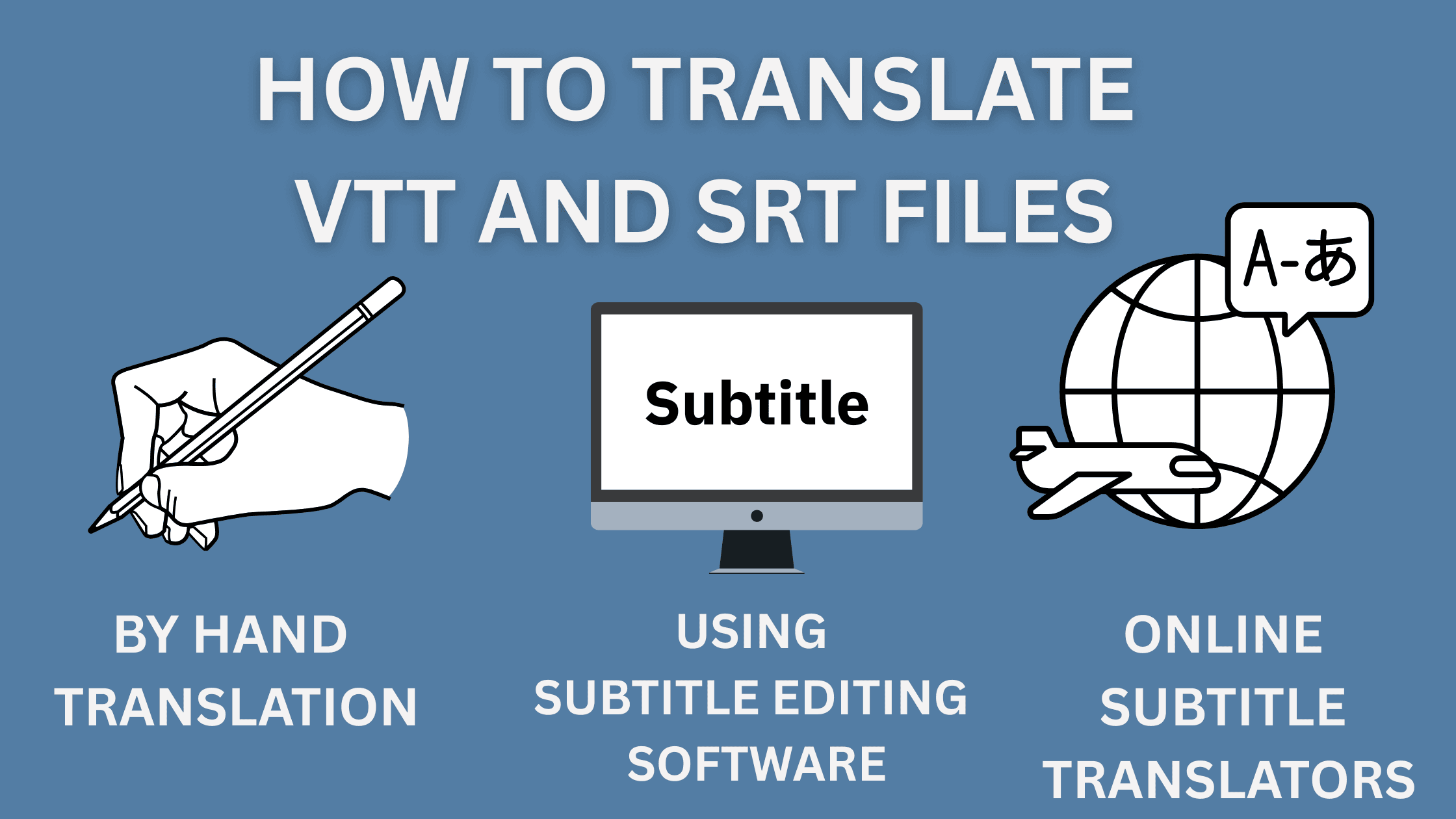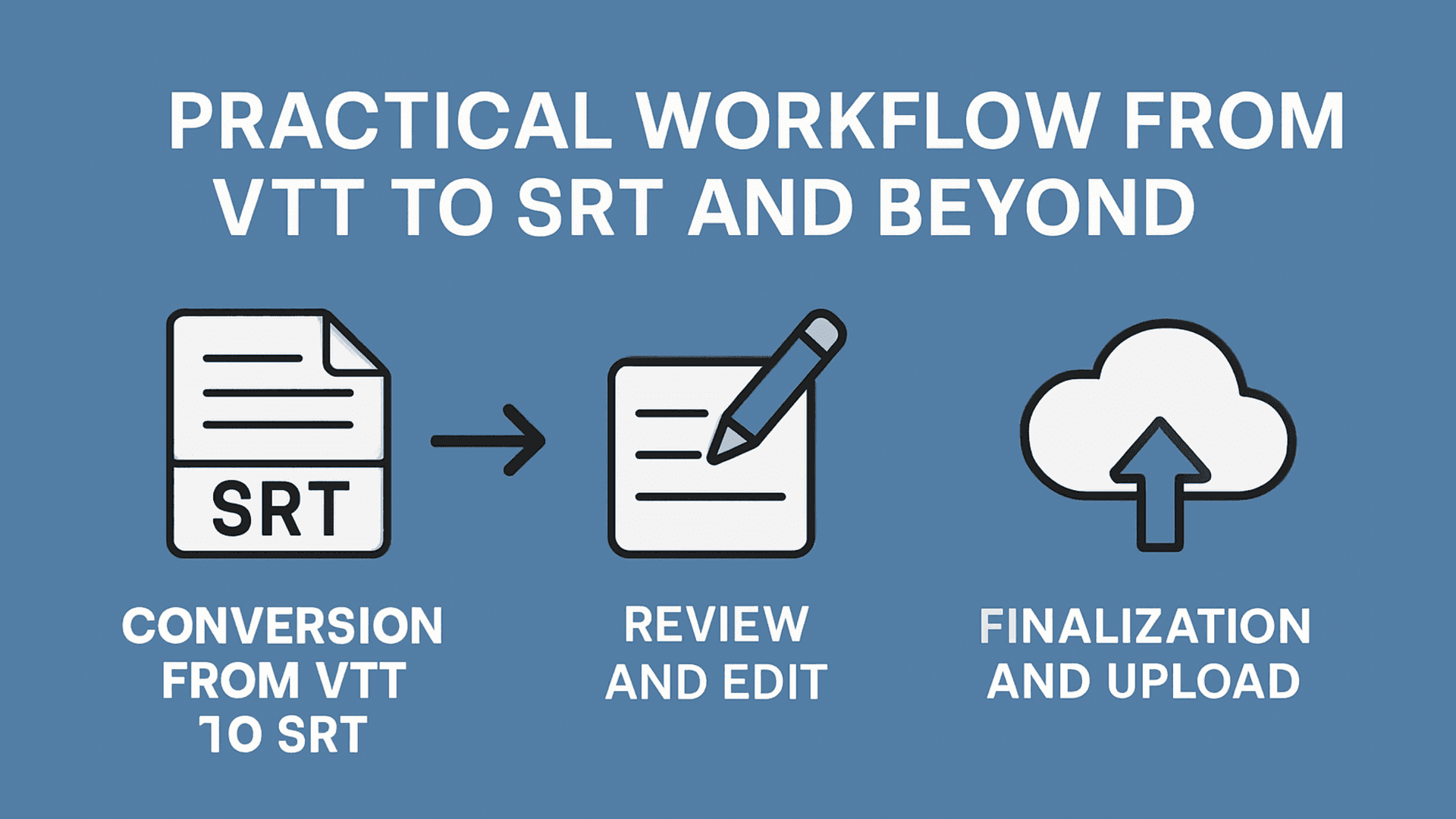
At their core, both VTT and SRT files serve the same purpose: to display timed text on a video. The text in these files is synchronized with the video's audio, allowing viewers to read what's being said. However, the way they structure this information and the features they support are where they diverge. The need for an SRT file language converter or other translation tools often arises from these structural differences.
SRT is the older and more widely supported of the two formats. It's a simple, plain-text format that has been around for decades. An SRT file contains of a order of numbered subtitle blocks. Each block hold a number, a long time and the text of the subtitle.
SRT is the previous and more largely supported of the two layouts. It is a simple, plain text layout that has been around for generations, important for its universal support. An SRT file is made up of a order numbered subtitle blocks. Each block contains a number, a long time and the text of the subtitle. This clear structure makes it easy to edit with a basic text editor and confirms it can be read by almost any media player or video tools. The tools loyalty and clarity have secured its status as the industry standard for subtitle files, making it the most common layout you will experience.
VTT on the other hand is a latest layout created by the World Wide Web network (W3C). It was created especially for use on the web with subtitle track element. A key difference with VTT is its deeper feature set. If it shares a similar structure with SRT, it has a few extra abilities that make it more powerful for web-based video. This is especially related if you need to translate VTT file content while maintaining its rich features, as VTT allows for more shifting and by sight using subtitles that are necessary for modern web design. Its latest option makes it the selected layout for tools that need more than just simple text display.
VTT files also support extra features like:
Styling: You can add simple styling to the text such as bolding, highlighting and changing the text color.
Positioning: You can mention where the subtitle should appear on the screen (e.g., top, bottom and left-positioning).
Cue Labels: These are selectable labels that can be added to each subtitle block which is useful for more difficult applications.

By Hand Translation
For a small number of subtitles, you can simply open the file in a text editor like Notepad and TextEdit. You then switch the original text with the translated text making sure not to change the timestamps and the numbering. This method is simple but can be very lengthy for long videos.
Using Subtitle Editing Software
For larger projects it is much more optimized to use focused subtitle editing software. These tools give a user-friendly platform that displays the subtitles by the video supporting you to see the context as you translate. Many of these programs also have internal translation features and merging with machine translation services.
Online Subtitle Translators
There are many online tools that can on its own translate subtitle files. You simply upload your VTT and SRT file select the target language and the tool will generate a new file with the translated content. If these tools are fast it is key to review the output for accuracy as machine translation is not always perfect and may miss details and cultural context.
If translating is about changing the content translating is about changing the layout. Sometimes, you might need to convert SBV file to SRT or turn a VTT file into an SRT format for better compatibility. This is usually necessary when a exact tool and media player only supports one layout. For example, YouTube already used the SBV layout, so you may still have these files and need to change them to the more universal SRT.
Online Conversion Tools
The easiest way to convert between formats is by using an online conversion tool. These web-based services allow you to upload your file and download it in the desired format with just a few clicks. They are fast, free, and generally reliable for simple conversions.
Subtitle Editing Software
Most professional subtitle editing software can also handle format conversions. This gives you more control and is a great option if you are already using the software for editing or translating.
Manual Conversion
For a simple conversion from VTT to SRT, you can manually edit the file. Since the structures are so similar, you can follow these steps:
1. Open the VTT file in a text editor.
2. Delete the WEBVTT header at the top.
3. Change the period (.) in the timestamps to a comma (,).
4. Save the file with the SRT extension.
This is an easy process since both formats share a very similar structure. Still remember that you will lose any of the VTT-specific features like styling and positioning.
When you need an SRT file language converter you are mostly looking for a tool that can translate the content of the SRT file. As discussed in the past this can be done physically with a dedicated software and through an online translation service. The main thing is that the tool accurately reads the SRT format, picks out only the text for translation, and leaves the timestamps and structure exactly as they are.
While VTT and SRT are the dominant players today, a significant number of older video projects and files still use the SBV format, which was once a standard for platforms like YouTube. The SBV format is even simpler than SRT, often just containing the timestamp and the subtitle text without the block numbering.
The primary difference is the timestamp layout which uses a dash to separate the start and end times. If you find yourself with an old video project or a downloaded subtitle file in this format you will likely need to convert SBV file to SRT to ensure compatibility with modern media players and editing software. Luckily this discussion is simple. Most online subtitle changers and editing software can handle this with comfort. The process involves modifying the layout the timestamps and adding the ordered numbering that is features of the SRT layout. This simple conversion is a lot the first step in a system that may later involve translating or editing the subtitles for a new audience.
When it comes to going global your video content, an SRT file language converter is an necessary tool. This is not just about a simple copy-paste job it is about a planned process that maintains the unity of your subtitle file while changing its content. The best Changers will allow you to upload your source SRT file and select from a large range of target languages. They use advanced machine translation processes to provide an original draft of the translation saving countless hours of physical work.
Still a word of caution is necessary. While machine translation has become remarkably sophisticated it is not a substitute for human review. Cultural nuances idiomatic expressions and specific terminology can be easily misinterpreted by a machine. After using an SRT file language converter it is always best practice to have a native speaker review and edit the translated file for accuracy and flow. This final step is what elevates a good translation to a great one ensuring your message is not just understood but truly resonates with the new audience.

1. Conversion from VTT to SRT:
You will start by using a reliable online utility or software to convert your VTT into an SRT. This will effectively strip out any VTT-specific styling or positioning and yield a clean file compatible worldwide.
After this point, your SRT needs to be employed in the SRT file language converter to give the Spanish translation. You would upload the SRT file, select Spanish, and then download the newly translated SRT file.
2. Review and Edit:
The new translated SRT file will be opened and then a native Spanish speaker will have to be called in to conduct a check for grammatical errors, awkward phrases' corrections, and furthermore ensure that the proper tone and context are being observed.
3. Finalization and Upload:
After the final translation of the SRT file has been accomplished, an SRT file formatted perfectly and translated will be in hand ready for upload along with your video.
This workflow demonstrates how converting and translating are interconnected steps in the process of making your content accessible. It is a testament to the flexibility of these formats that you can move between them and modify their content with relative ease. Whether you need to convert SBV file to SRT for an old project or translate VTT file content for a new one, having a clear understanding of these formats and the tools available will streamline your entire process.
While VTTs and SRTs play a significant role in video accessibility, they serve different purposes. The simplicity of SRT makes it an excellent choice for almost all applications since it is well-supported. Whereas, in terms of advanced options, VTT is the better choice for web-based video dressed with styling and positioning.
In the end, knowing the differences and how to convert between the two formats is a skill well worth having. This is especially true as a content creator, translator, or even just a person trying to add subtitles to a personal video; mastering these tools would help in globally promoting your content inclusively. For this, you may translate from a VTT file's language into another language or from SBV to SRT for a past project. Localization of a whole subtitle file can depend on SRT language converter. Generally, it is a platform choice whether to use translate VTT file andr SRT. However, proper knowledge and tools would enable a user to switch free-flowing between the two formats for global access to appealing videos. Thus, flexibility in using the right tools for the job makes easy an apparent difficult challenge.
Translation and localization of entire files as subtitles usually depend upon SRT file language converters. VTT in place of SRT is essentially a matter of platform selection. However, one can freely switch formats by having proper knowledge or the right tools on hand to ensure that one's videos are ready for people all across the globe. Right tool-use for the right job would turn something looking like an enormous task into a straightforward yet efficient one.